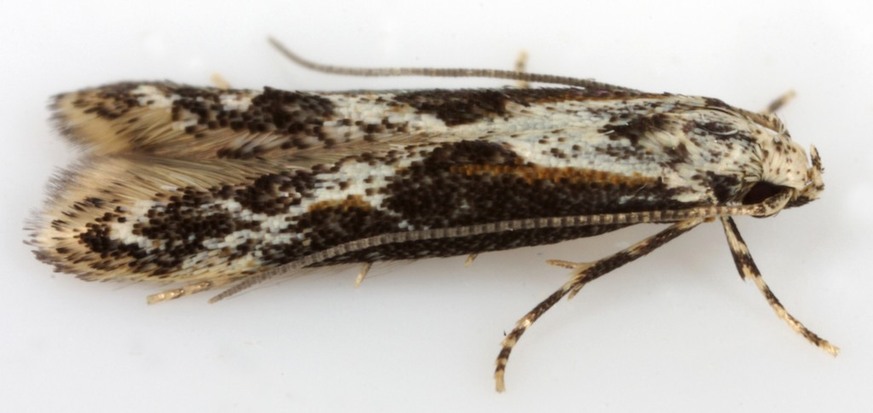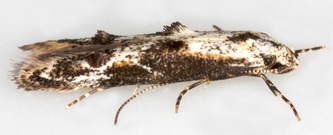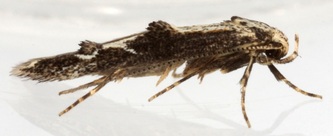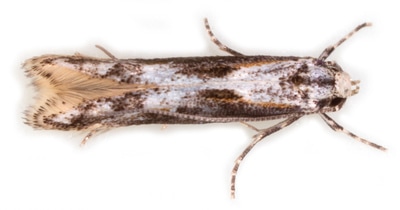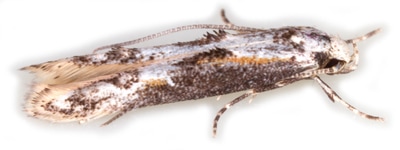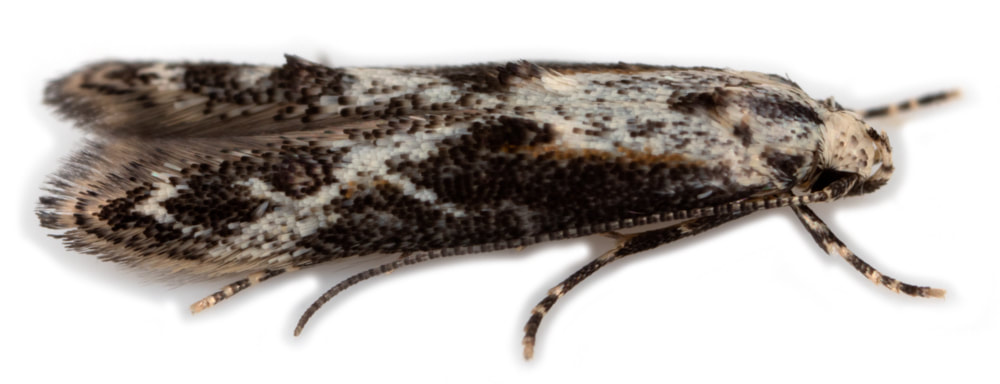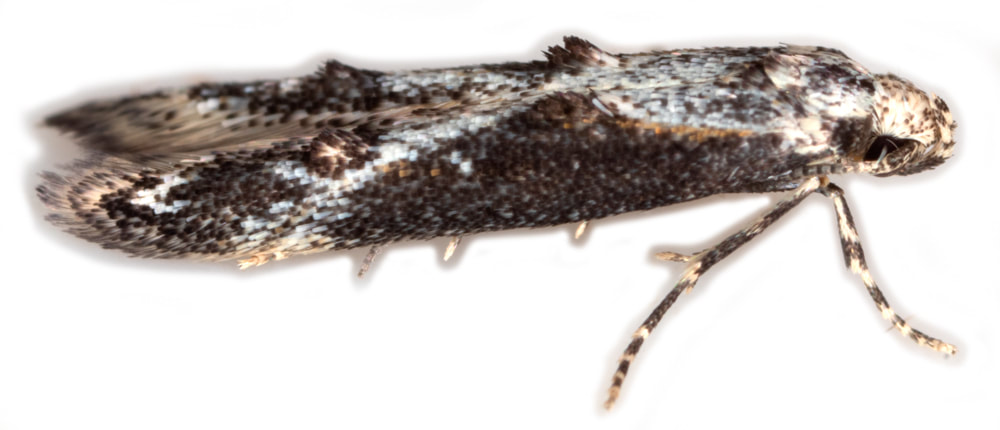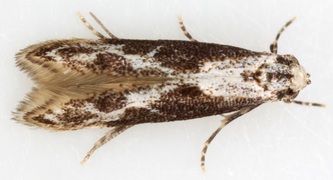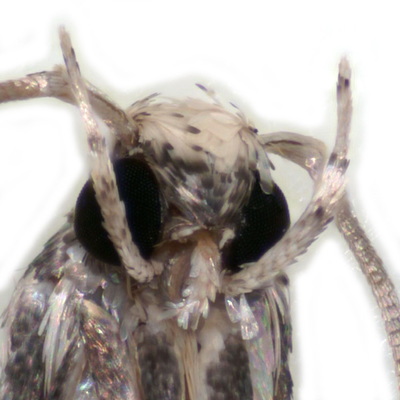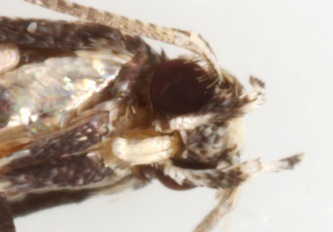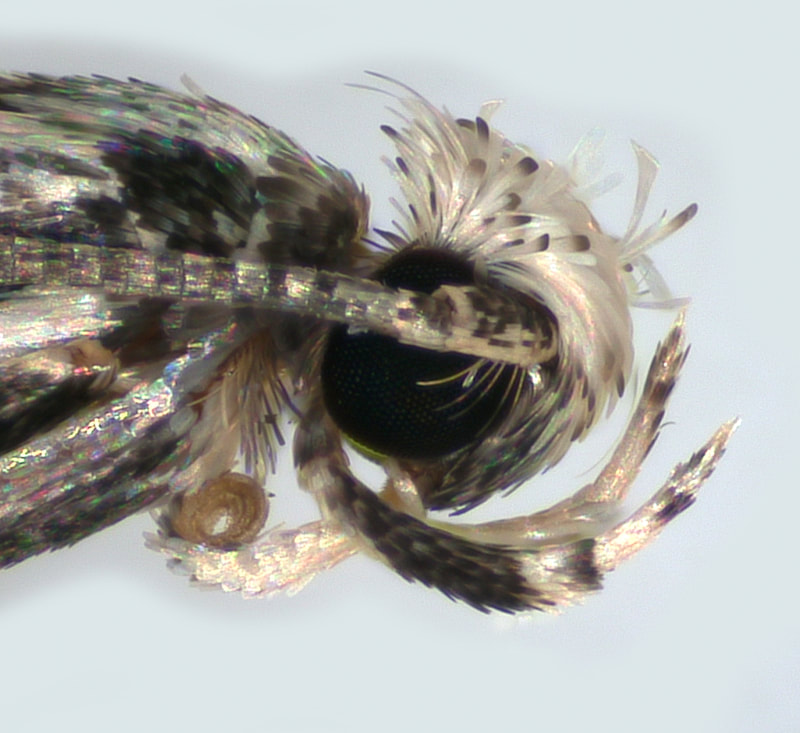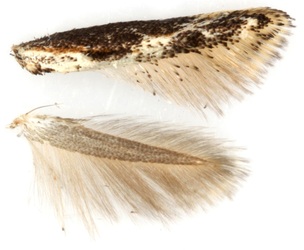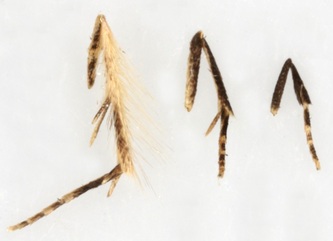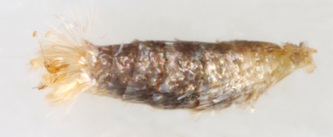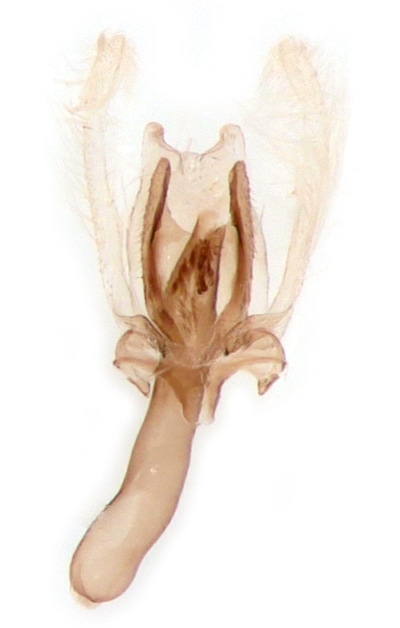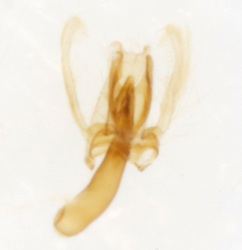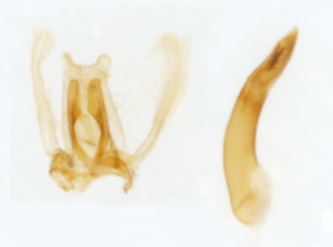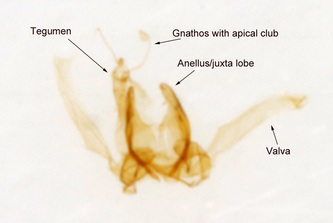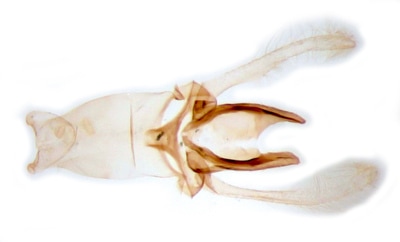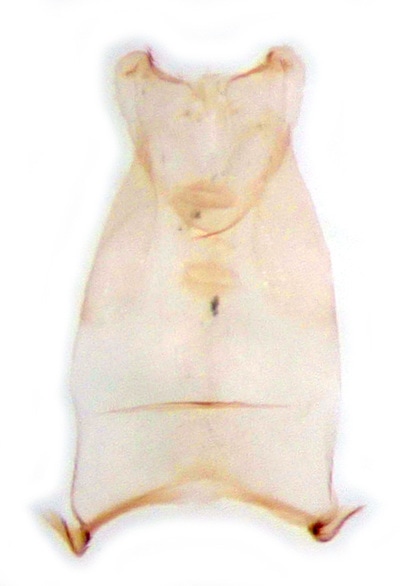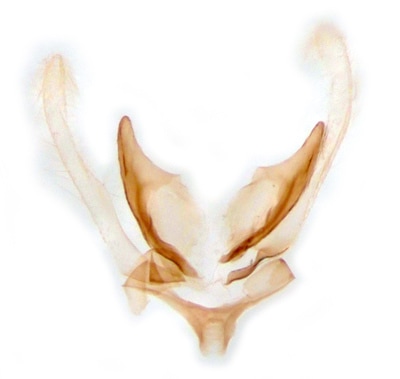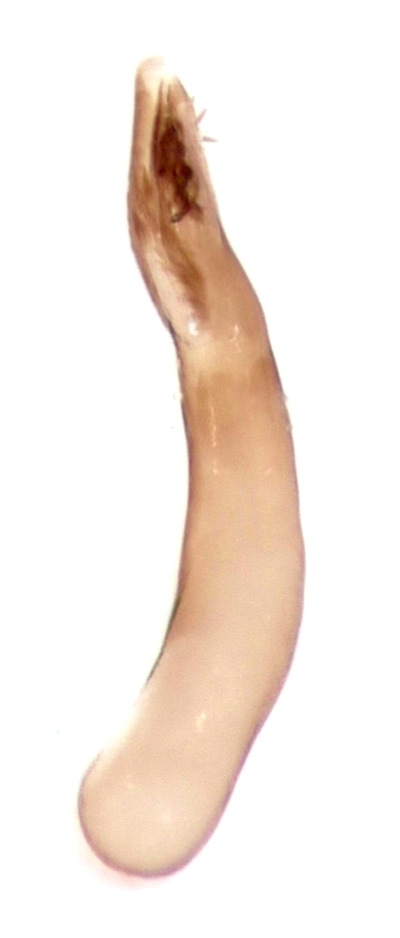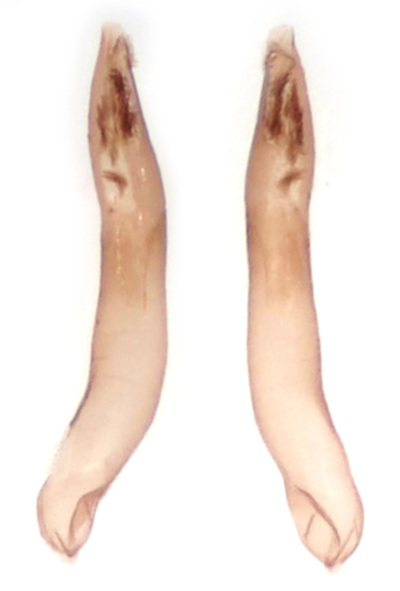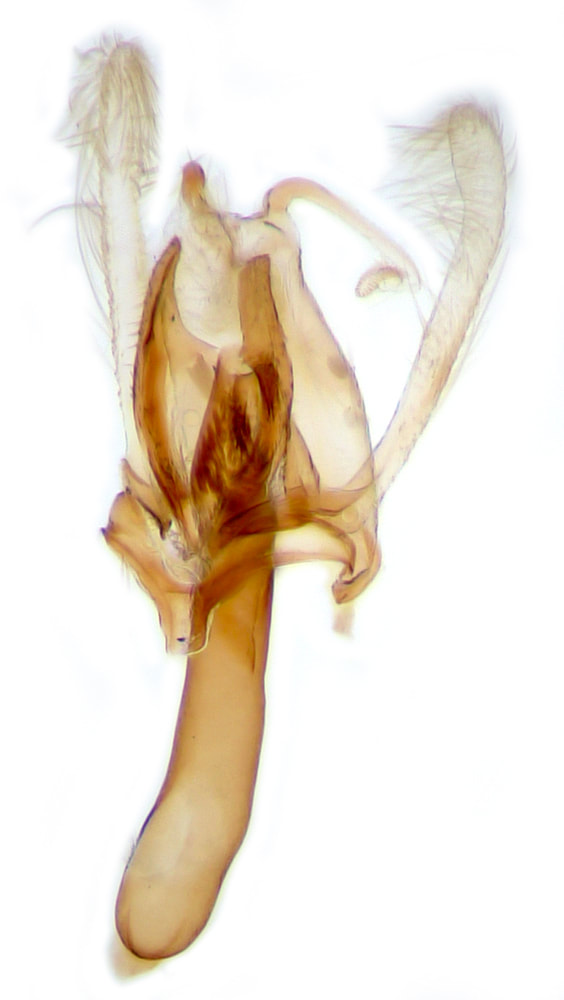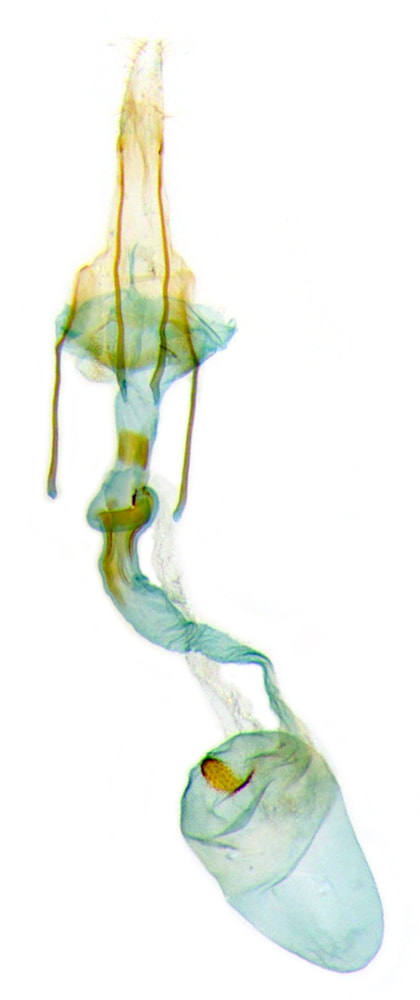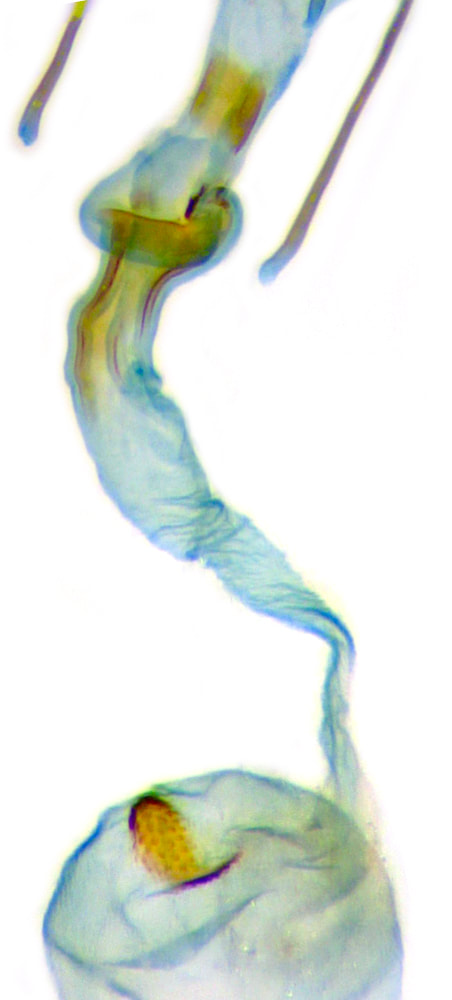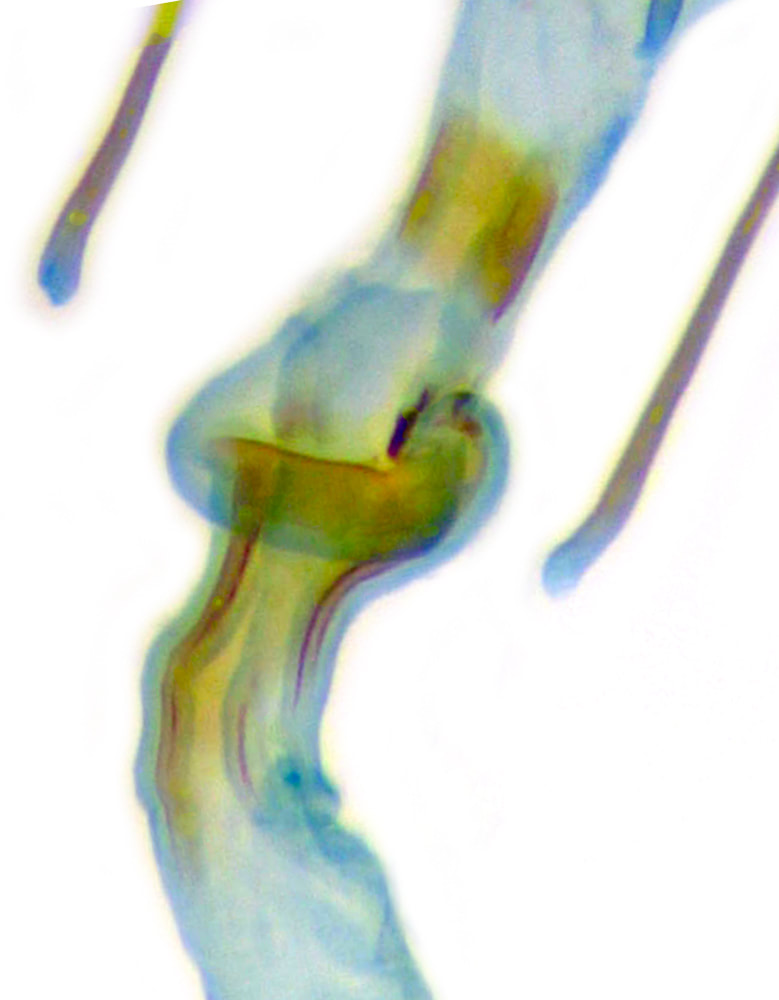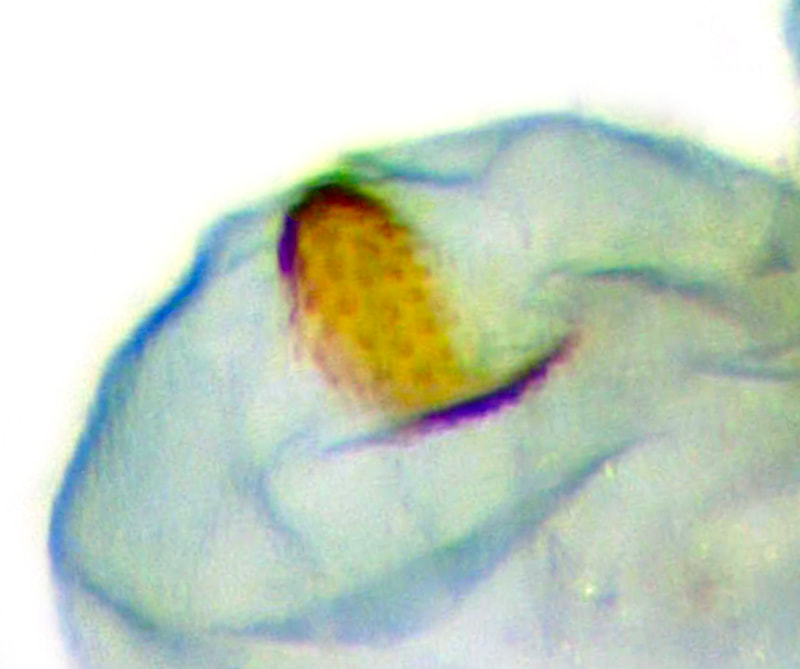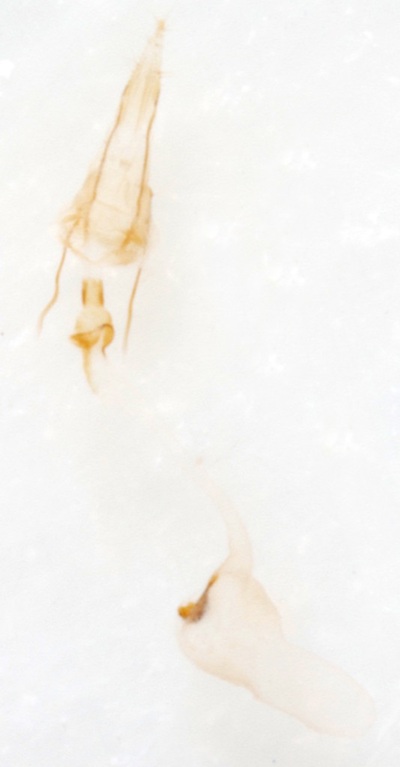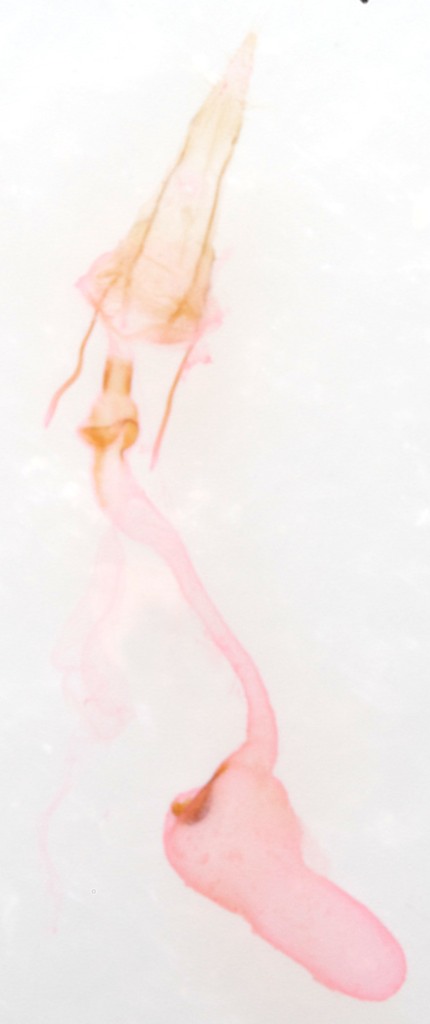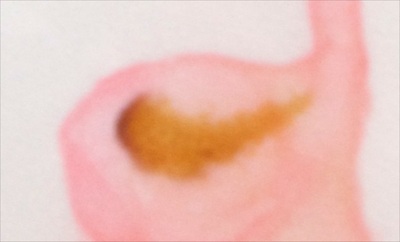39.001 Blastodacna hellerella (Hawthorn Berry Moth)
ws: 10-11mm; May-Aug; hawthorn (Crataegus monogyna), midland hawthorn (Crataegus laevigata); common throughout Britain, except N.Scotland
ID: Base of dorsum largely white. May be very difficult to distinguish from B.atra. See Blastodacna
|
§1 Foulness, Essex; 29/06/2008; male; fw 4.7mm
§2 Westcliff-on-sea, Essex; 02/07/2008; male; fw 5.3mm §3 Westcliff-on-sea, Essex; 09/07/2010; fw 5.7mm §4 Westcliff-on-sea, Essex; 14/06/2011; male; fw 5.1mm §5 Strumpshaw Fen, Norfolk; 07/07/2013; female §6 Arne, Dorset; 06/07/2016; male; fw 5.2mm; to light §7 Romansleigh, Devon; 25/06/2016; male; fw 5.4mm; to light §8 Westcliff-on-sea, Essex; 16/07/2018; female; fw 4.5mm; to light §9 Stour Wood, Essex; 08/07/2021; to light All images © Chris Lewis |
§10 Pound Wood, Essex; 18/07/2022; male; fw 5.1mm
§11 Bampton Grange, Cumbria; 13/06/2023; male; fw 5.4mm |
Page published 2011 (§1-4) | §5 added 09/04/2013 | §6 and ID text added11/09/2016 | §7 added 07/01/2017 | §8 added 27/04/2019 |
§9 added 06/08/2021 | §10 added 20/12/2022 | §11 added 17/12/2023
§9 added 06/08/2021 | §10 added 20/12/2022 | §11 added 17/12/2023
